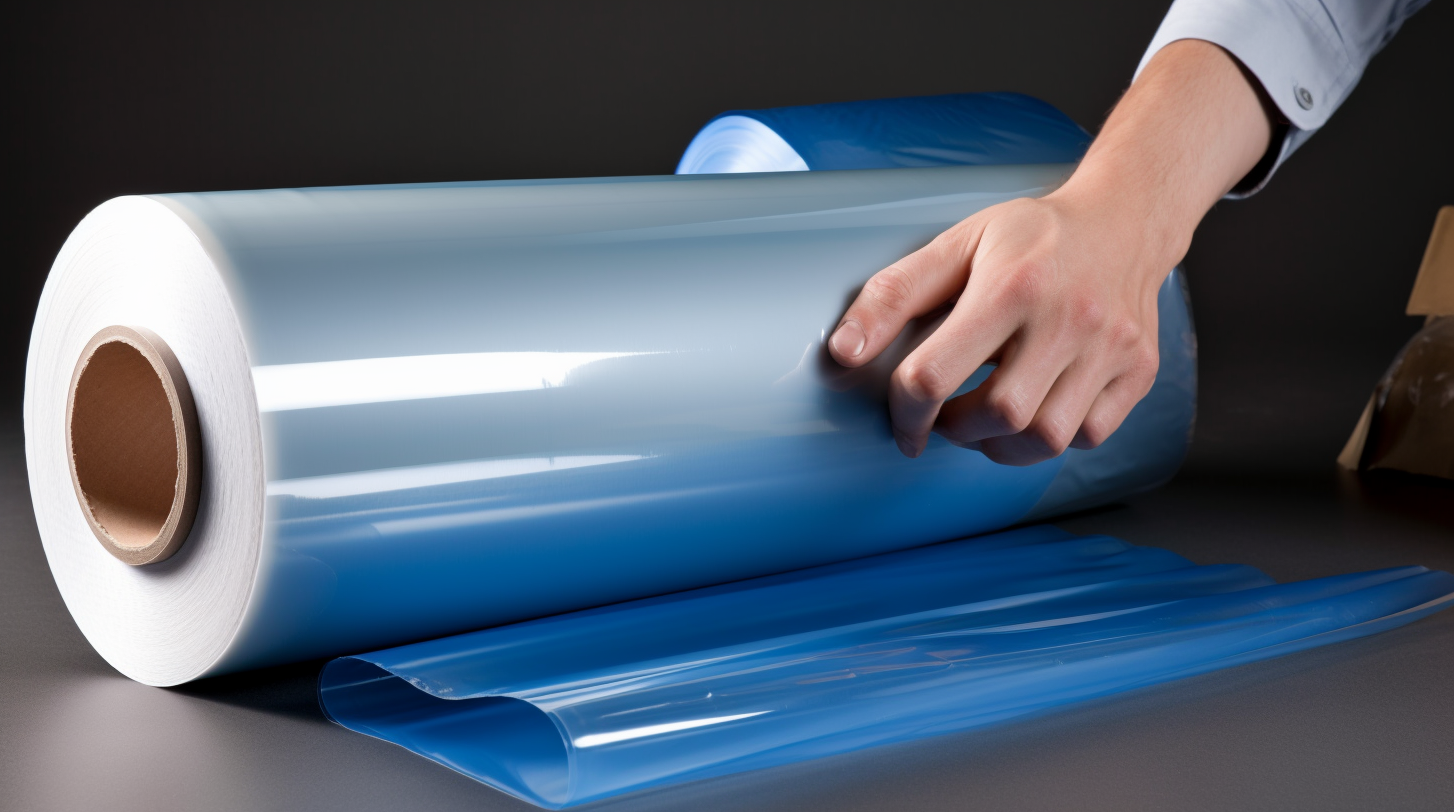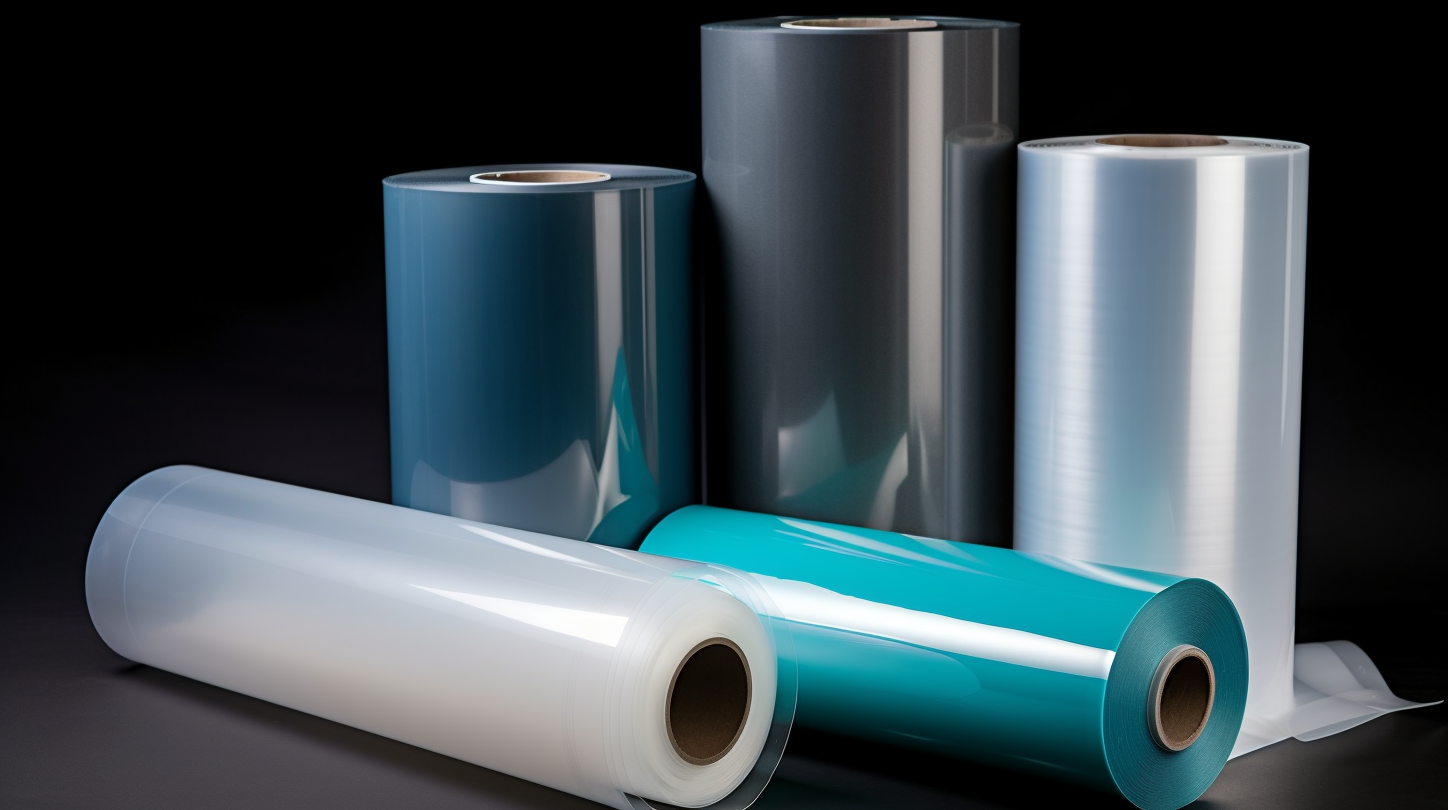In today’s world, sustainability and efficiency are critical in any industry. One effective solution is pre-stretched film. Did you know that pre-stretched film can reduce waste and improve efficiency by up to 50%?
The pre-stretched film is a specialized type of stretch wrap film that is pre-stretched during manufacturing before being wound onto a roll. This process elongates the film to a specific percentage of its original length, resulting in a thinner but stronger and more durable film with improved load-holding capabilities. By properly applying pre-stretched film and following best practices, companies can reduce waste, improve efficiency and productivity, increase load stability and protection, and improve ergonomics and safety.
Choosing the right type of pre-stretched film is crucial for achieving optimal results. Follow best practices to ensure the film is applied properly and not damaged during application.
What is a pre-stretched film?
Definition and Explanation of Pre-Stretched Film:
Pre-stretched film is a specialized type of stretch wrap film that is pre-stretched during the manufacturing process before being wound onto a roll. This process elongates the film to a specific percentage of its original length, resulting in a thinner but stronger and more durable film with improved load-holding capabilities.
Unlike regular stretch film, which is stretched during application, pre-stretched film is already stretched to its maximum elongation and does not require as much force to apply to the load. This makes pre-stretched film ideal for high-volume operations that require efficient and ergonomic packaging solutions.
How it Differs from Regular Stretch Film:
Regular stretch film is typically stretched during the application, either by hand or by machine, to provide load stability and protection during transport. However, this process can require significant force, especially when wrapping larger or heavier loads.
On the other hand, the pre-stretched film is already stretched to its maximum elongation during the manufacturing process, resulting in a thinner but stronger film that requires less force to apply. This means that pre-stretched film is more efficient and easier to use, reducing the risk of worker injury and improving packaging and shipping operations productivity.
In addition to its ease of use, the pre-stretched film offers improved load-holding capabilities and protection compared to regular stretch film. Its thinner but stronger composition allows for more precise wrapping, reducing the required film and minimizing waste. It is also more resistant to punctures and tears, ensuring that loads are properly secured and protected during transport.
Benefits of pre-stretched film

Reduced Waste and Cost Savings:
Because of its increased strength and durability, less film is required to secure and protect loads, resulting in less material waste. Additionally, the thinner film reduces the weight of the wrapped load, allowing for more products to be shipped in each truckload, which reduces the number of trips required to transport the same amount of goods. This results in significant cost savings and increased operational efficiency.
Improved Efficiency and Productivity:
The pre-stretched film is easier and faster to apply than regular stretch film. The pre-stretching process ensures that the film maintains a consistent thickness throughout the entire length of the roll, resulting in a more uniform and stable load that is less likely to shift or become damaged during transport. Additionally, applying the pre-stretched film requires less physical effort, reducing operator fatigue and increasing productivity. This, in turn, can lead to improved overall efficiency in packaging and shipping operations.
Increased Load Stability and Protection:
The pre-stretched film offers superior load-holding capabilities and improved stability compared to regular stretch film. The consistent thickness of the pre-stretched film ensures a more uniform and stable load, reducing the risk of damage during transport. Additionally, the increased strength and durability of the film provide better protection against punctures, tears, and other forms of damage that can occur during shipping.
Improved Ergonomics and Safety:
The reduced physical effort required to apply pre-stretched film also improves workers’ ergonomics and safety. The pre-stretched film is easier to handle and apply, reducing the risk of operator injury from repetitive motion or strain. Additionally, the thinner and lighter film reduces the weight of the wrapped load, which can reduce the risk of injury from lifting and handling.
How to use pre-stretched film
Step 1. Ensure that the load to be wrapped is stable and secure:
Before applying the pre-stretched film, ensure the load to be wrapped is stable and secure. If the load is unstable or not properly secured, it can shift or become damaged during transport.
Step 2. Unroll the pre-stretched film to the desired length using a built-in or separate dispenser:
Once the load is ready, unroll the pre-stretched film to the desired length. The film can be dispensed using a built-in or separate stretch film dispenser.
Step 3. Apply the film to the load with even tension, starting at the bottom and working upward:
When applying the film, use even tension to ensure that the film is properly stretched and applied. Start at the bottom of the load and work upward, applying the film in a spiral pattern.
Step 4. Stretch the film as it is applied, making sure to overlap the previous layer of the film by at least 50%:
Stretch the film as it is applied to maintain its strength and durability. Overlap the previous layer of the film by at least 50% to ensure that the load is properly secured.
Step 5. Continue applying the film until the load is fully wrapped, ensuring that there are no gaps or areas left uncovered:
Continue applying the film until the load is fully wrapped. Ensure no gaps or areas are left uncovered to ensure that the load is properly secured and protected during transport.
Best practices for optimal results
To achieve optimal results when using pre-stretched film, it is important to follow some best practices:
- First, choosing the correct film gauge and pre-stretch percentage for the load being wrapped is essential. A film with too little pre-stretch or too low of a gauge can lead to load instability, while a film with too much pre-stretch or too high of a gauge can result in material waste.
- Second, ensuring that the wrapped load is free of sharp edges or protrusions that can puncture or tear the film is important. The film should be applied with even tension to avoid overstretching or under-stretching, which can lead to load instability and damage during transport.
- Third, it is important to store pre-stretched film properly to prevent damage or degradation. The film should be stored in a cool, dry area away from direct sunlight or other sources of heat or moisture. When using machinery, it is essential to regularly inspect the equipment for wear and tear and perform routine maintenance as needed.
- Finally, it is important to follow critical safety guidelines when using pre-stretched film. Workers should be trained on proper handling and application techniques to avoid injury, and appropriate personal protective equipment should be worn when handling the film.
Types of pre-stretched film
Overview of Different Types of Pre-Stretched Film:
- Machine Grade Pre-Stretched Film: This type of film is designed for use with pre-stretch machinery and is commonly used in high-volume operations.
- Hand Grade Pre-Stretched Film: This type of film is designed for manual application and is typically used for lighter loads or low-volume operations.
- Hybrid Pre-Stretched Film: This type of film combines the strength and durability of machine-grade film with the ease of use of hand-grade film.
- Colored Pre-Stretched Film: This type of film is available in various colors and is commonly used for identifying and organizing loads.
- UV-Resistant Pre-Stretched Film: This film is designed to resist damage from UV light exposure and is commonly used for outdoor storage and transportation.
How to Choose the Right Pre-Stretched Film for Your Application:
- Consider Load Weight: When choosing a pre-stretched film, it is important to consider the weight of the wrapped load. Heavier loads require the thicker and stronger film to ensure proper load-holding capabilities.
- Evaluate Product Shape and Size: The shape and size of the wrapped product can also impact the type of pre-stretched film required. A thicker film may be necessary for irregularly shaped or bulky items to provide adequate protection and load stability.
- Take Storage Conditions into Account: The storage conditions of the product being wrapped can also impact the type of pre-stretched film that is required. A UV-resistant film may be necessary for products stored in harsh environments or exposed to the elements to prevent damage and degradation.
- Consider Transportation Requirements: The transportation requirements of the wrapped product should also be considered. For products that will be transported long distances or subjected to multiple handling processes, a stronger and more durable film may be necessary to prevent damage during transport.

The pre-stretched film is a highly effective solution for companies looking to improve their sustainability, reduce waste, and increase efficiency in their packaging and shipping operations. By choosing the right type of pre-stretched film and following best practices, companies can achieve optimal results and protect their loads during transport while promoting worker safety and reducing environmental impact.














